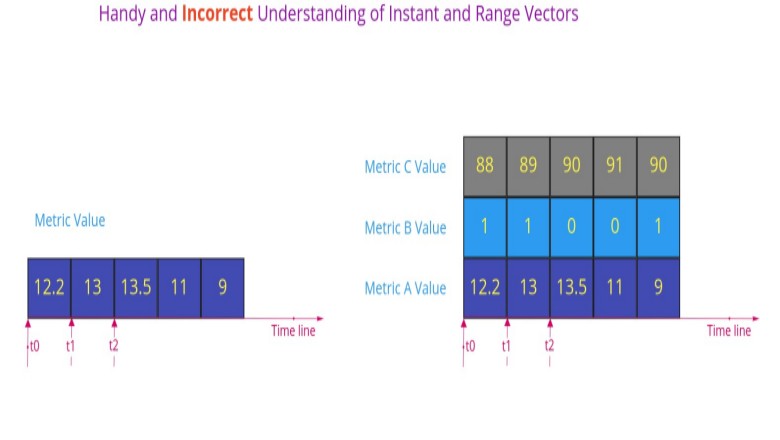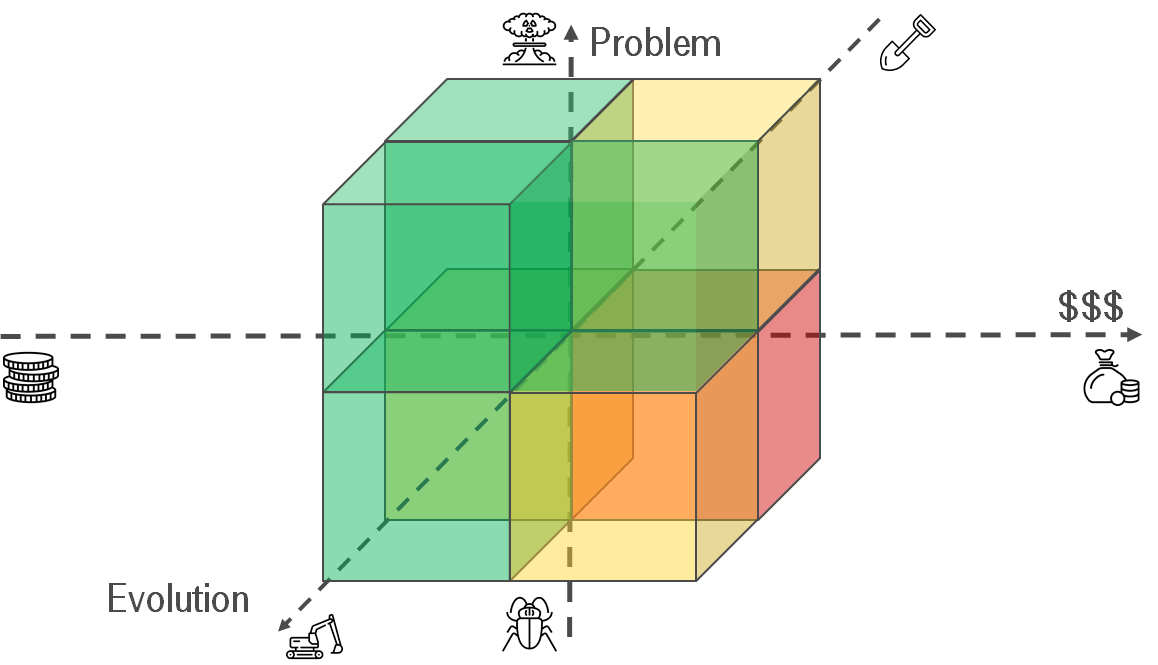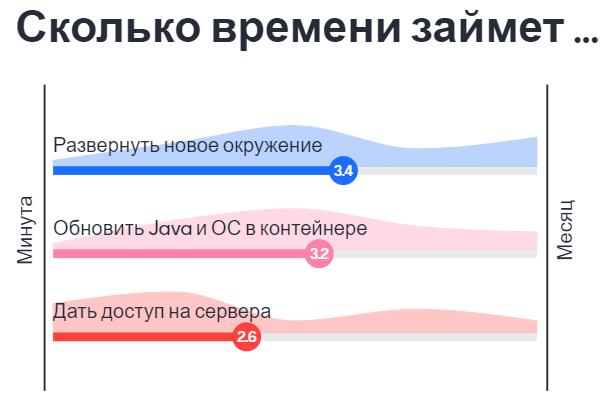
Monitoring systems are a vital tool for any system administrator, because they can be used to extract specific information from services, such that:

Software Development Methodology

Monitoring systems are a vital tool for any system administrator, because they can be used to extract specific information from services, such that:

A few weeks ago we wrote an article about Docker and WebRTC servers and talked about the intricacies of launching containers. Our readers (rightly) questioned whether Docker was a suitable tool for production, for the following reasons:
The developer or owner of a software product often faces the question of choosing a suitable location for hosting server capacity. As you know, software always meets hardware.
In the previous article we refreshed our memory of WebRTC CDN and the ways this technology helps to minimize latency for WebRTC streams. We also discussed why load balancing and autoscaling wouldn't be amiss in CDNs. Here are the main points from the article:

The modern browsers do not give users a choice between using WebRTC and not using it. And while you can playback streams using HLS or MSE, WebRTC remains the only tool for capturing camera feeds and publishing streams from a browser. The browser developers have accepted this "format" and integrated it into their products – just as they used to support the Flash Player as a plugin. The only difference is that WebRTC comes natively integrated into the browser — as code, not a plugin. If, in a few years, a new and better library for video streaming is introduced they will undoubtedly make a switch. But these days, Chrome maintains its dominance, so no contenders for WebRTC are in sight.
The vast majority of IT specialists in various fields strive to perform manually as few actions as possible. I won't be afraid of the loud words: what can be automatized, must be automatized!
Let's imagine a situation: you need to deploy a lot of servers of the same type and do it quickly. Quickly deploy, quickly undeploy. For example, to deploy test rigs for developers. When development is carried out in parallel, you may need to separate the developers, so they don't impede each other and possible errors of one of them don't block the work of the others.
There may be several ways to solve this problem:

Hi, My name is Alex and I am a DevOps engineer at Altenar. “No Windows, no problems.” - that is the answer I got by asking a guru of Ansible "How do you manage Windows?" on one of the local Ansible meetups. Although we have been running a modern stack (k8s, helm, .net core, etc) in production for about two years, that’s not how it has always been.

PVS-Studio user support often receives clients' suggestions on product improvement. We are happy to implement many of them. Recently one of the users suggested refining the automatic notification utility for developers (Blame Notifier). They asked us to make Blame Notifier extract the date/the code revision to which the analyzer issued a message using blame information from the version control system. This feature allowed us to expand the utility capabilities, which we'll discuss in this article.

"How much longer are you going to build it?" - a phrase that every developer has uttered at least once in the middle of the night. Yes, a build can be long and there is no escaping it. One does not simply redistribute the whole thing among 100+ cores, instead of some pathetic 8-12 ones. Or is it possible?

In some projects, the build script is playing the role of Cinderella. The team focuses its main effort on code development. And the build process itself could be handled by people who are far from development (for example, those responsible for operation or deployment). If the build script works somehow, then everyone prefers not to touch it, and no one ever is thinking about optimization. However, in large heterogeneous projects, the build process could be quite complex, and it is possible to approach it as an independent project.If you treat the build script as a secondary unimportant project, then the result will be an indigestible imperative script, the support of which will be rather difficult.
In this note we will take look at the criteria by which we chose the toolkit, and in the next one — how we use this toolkit. (There is also a Russian version.)

Tested on the following configuration:
Server: ubuntu 20.04
Clients: ubuntu 16.04, 18.04, 20.04
It doesn’t require a lot of software to create it.

Let's once again improve Ansible. Well, this won't work without getting into sources.

Let's say you use GitHub, write code, and do other fun stuff. You also use a static analyzer to enhance your work quality and optimize the timing. Once you come up with an idea - why not view the errors that the analyzer gave right in GitHub? Yeah, and also it would be great if it looked nice. So, what should you do? The answer is very simple. SARIF is right for you. This article will cover what SARIF is and how to set it up. Enjoy the reading!

All Prometheus metrics are based on time series - streams of timestamped values belonging to the same metric. Each time series is uniquely identified by its metric name and optional key-value pairs called labels. The metric name specifies some characteristics of the measured system, such as http_requests_total - the total number of received HTTP requests. In practice, you often will be interested in some subset of the values of a metric, for example, in the number of requests received by a particular endpoint; and here is where the labels come in handy. We can partition a metric by adding endpoint label and see the statics for a particular endpoint: http_requests_total{endpoint="api/status"}. Every metric has two automatically created labels: job_name and instance. We see their roles in the next section.
Prometheus provides a functional query language called PromQL. The result of the query might be evaluated to one of four types:
Scalar (aka float)
String (currently unused)
Instant Vector - a set of time series that have exactly one value per timestamp.
Range Vector - a set of time series that have a range of values between two timestamps.
At first glance, Instant Vector might look like an array, and Range Vector as a matrix.
If that would be the case, then a Range Vector for a single time series "downgrades" to an Instant Vector. However, that's not the case:

What is distributed tracing? Distributed tracing is a method used to profile and monitor applications, especially those built using a microservices architecture. Distributed tracing helps pinpoint where failures occur and what causes poor performance.
Let’s have a look at a simple prototype. A user fetches information about a shipment from `logistic` service. logistic service does some computation and fetches the data from a database. logistic service doesn’t know the actual status of the shipment, so it has to fetch the updated status from another service `tracking`. `tracking` service also needs to fetch the data from a database and to do some computation.
In the screenshot below, we see a whole life cycle of the request issued to `logistics` service:

"Come, let us make bricks, and burn them thoroughly."
– legendary builders
You may have noticed by 2020 that data is eating the world. And whenever any reasonable amount of data needs processing, a complicated multi-stage data processing pipeline will be involved.
At Bumble — the parent company operating Badoo and Bumble apps — we apply hundreds of data transforming steps while processing our data sources: a high volume of user-generated events, production databases and external systems. This all adds up to quite a complex system! And just as with any other engineering system, unless carefully maintained, pipelines tend to turn into a house of cards — failing daily, requiring manual data fixes and constant monitoring.
For this reason, I want to share certain good engineering practises with you, ones that make it possible to build scalable data processing pipelines from composable steps. While some engineers understand such rules intuitively, I had to learn them by doing, making mistakes, fixing, sweating and fixing things again…
So behold! I bring you my favourite Rules for Data Processing Pipeline Builders.
There probably is no way one who stores some crucial data (and well, in particular, using SQL databases) can possibly dodge from thoughts of building some kind of safe cluster, distant guardian to protect consistency and availability at all times. Even if the main server with your precious database gets knocked out deadly - the show must go on, right? This basically means the database must still be available and data be up-to-date with the one on the failed server.
As you might have noticed, there are dozens of ways to go and Patroni is just one of them. There is plenty of articles providing a more or less detailed comparison of the options available, so I assume I'm free to skip the part of luring you into Patroni's side. Let's start off from the point where among others you are already leaning towards Patroni and are willing to try that out in a more or less real-case setup.
I am not a DevOps engineer originally so when the need for the high-availability cluster arose and I went on I would catch every single bump on the road. Hope this tutorial will help you out to get the job done with ease! If you don't want any more explanations, jump right in. Otherwise, you might want to read some more notes on the setup I went on with.

Major players in the Chinese app market are joining forces to take on the almighty Google Play store. Xiaomi, Oppo and Vivo are reported to launch the Global Developer Service Alliance (GDSA), a platform allowing Android developers to publish their apps in the partnering stores from one upload.
The GDSA is expected to launch in nine countries—including India, Indonesia, Malaysia, Russia, Spain, Thailand, the Philippines, and Vietnam—although paid app support may vary across the regions. Canalys’ Nicole Peng explains the wide reach of this alliance:
By forming this alliance each company will be looking to leverage the others’ advantages in different regions, with Xiaomi’s strong user base in India, Vivo and Oppo in Southeast Asia, and Huawei in Europe.

Before we start, I'd like to get on the same page with you. So, could you please answer? How much time will it take to:

It will take longer than you expect. I will explain why.